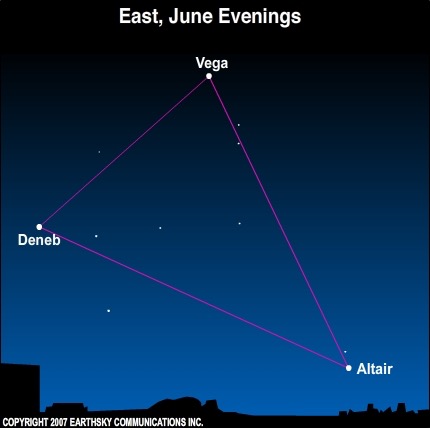

The Summer Triangle

In the constellation Aquila
Altair is the brightest star located in the constellation Aquila and it forms one vertex of the Summer Triangle. It has a magnitude 0.76 making it the the twelfth-brightest star in the sky. It is a spectral class A7 dwarf star and it is 16.8 light years away. (The spectral classification in astronomy, is a classification of the stars by their temperature and spectrum.)
Other facts about Altair:

Astronomical Name: Alpha Aquilae.
Meaning: From Arabic: “The Eagle”.
Apparent Magnitude: 0.76.
Absolute Magnitude: 2.20.
Distance (light-years): 16.8.
Altair is easily recognized, because it is situated on either side along a straight line by two stars, Alshain and Tarazed (Beta and Gamma Aquilae). It is also one of the nearest bright stars and it has an exceptional rotation rate. Using Doppler shift measurements, it rotates more than three times on its axis in one of our days, as compared to one rotation in 25 days for our Sun.
Other points of interest. There are nine main objects in the constellation:
Altair, the Flying One (one of the stars in the Summer Triangle)
Alshain, the Falcon
Tarazed, the Plundering Falcon
Deneb El Okab “Tail of the Falcon”
Deneb Zeta
Bezek “lightning”
Tseen Foo “The heavenly raft”
Al Thalmain The two ostriches
Eta
Iota
Source: http://www.brighthub.com/science/space/articles/95010.aspx






























